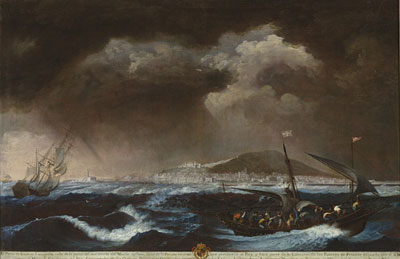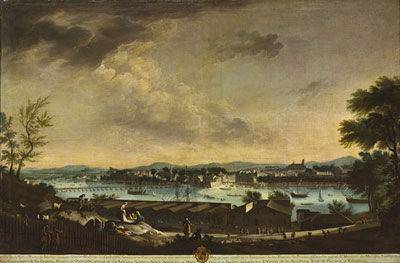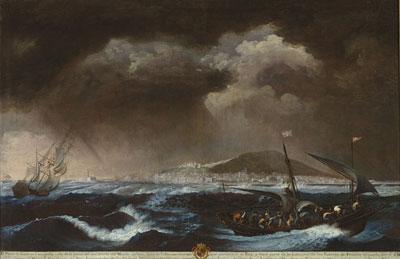When we opened our new Latin American art galleries last summer, our pre-Columbian collection drew much attention, and rightly so—LACMA boasts a rich collection and Jorge Pardo's daring installation reinvigorated the discussion about the display of art. But what you may not have heard as much about is something the museum is doing for the first time in its history—devoting galleries to Spanish colonial art. This is a first not only for LACMA, but also for many mainstream museums across the country that have traditionally showcased pre-Columbian art, but very rarely art of the viceroyalties.
Among our recent acquisitions is a group of six works by the eighteenth-century painter Juan Patricio Morlete Ruiz, one of the most sophisticated and accomplished artists of the time (eighteenth-century Mexican painting also happens to be an area I find especially fascinating). Morlete's paintings are based on engravings of the original series of paintings, Ports de France, by the French artist Claude-Joseph Vernet. Vernet's series comprised fifteen paintings, which were completed between 1753 and 1765, and commissioned for Louis XV of France.
Morlete's works bear the royal Spanish coat of arms, and it is likely they were commissioned by viceroy Antonio María de Bucareli y Ursúa (r. 1771-1779). One such set, for example, is listed in the viceroy's death inventory, which also includes two views of Mexico City—an intriguing local addenda.

View of the Port of Sète (El puerto de Sète), Juan Patricio Morlete Ruiz, 1771
Some may find the subject of Morlete's set somewhat surprising. What motivated a Mexican or New Spanish artist to paint a set of French ports? But this is precisely what makes the set so compelling; it tells us much about the working methods of Spanish colonial masters, and how they were aware of the most current European artistic trends.

View of the City and Port of Bayonne (Vista de la villa y puerto de Bayona), Juan Patricio Morlete Ruiz, 1771
After all six paintings (the set is broken down and the location of many of the paintings is unknown) are cleaned and the yellow varnish removed we will be able to appreciate more fully Morlete's luminous palette. Down the line I plan to organize a small exhibition and bring together several of Vernet's paintings and the prints after them which Morlete surely saw. This will be an exciting exercise where the collaboration of a curator and a team of painting conservators will yield much new information about the history of painting in New Spain. Stay tuned.
Ilona Katzew, Curator of Latin American Art



